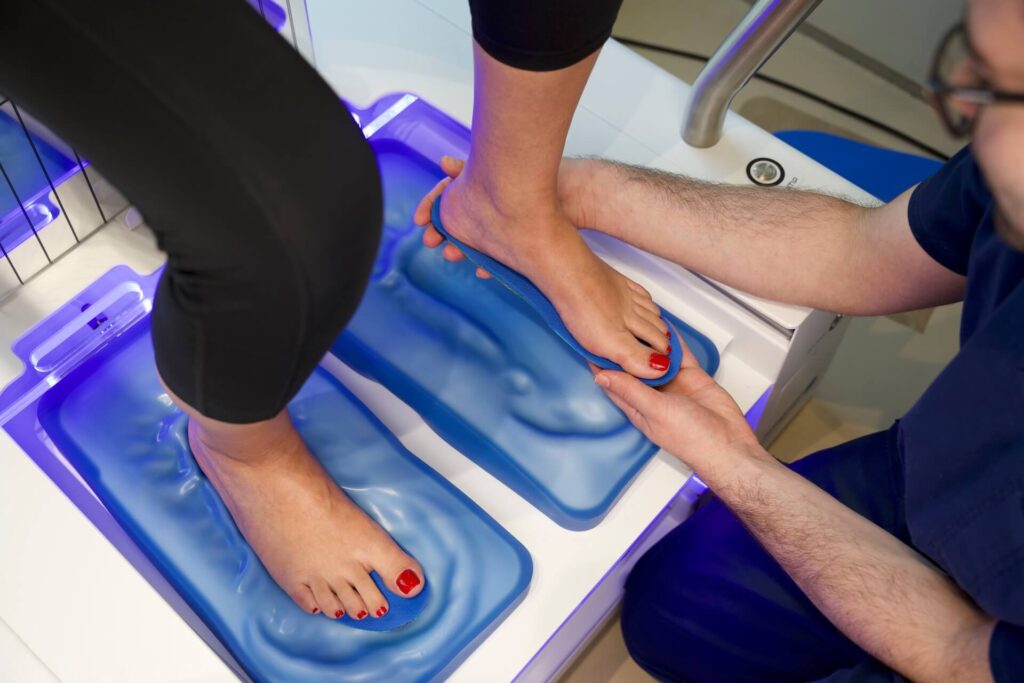Climbing the Ladder Shouldn’t Wreck Your Spine
You’re ambitious. Focused. Putting in the hours at your desk to get ahead. But your body is telling a different story: aching lower back, stiff neck, shoulders creeping toward your ears.
This is more than just discomfort, it’s a structural warning. And it’s one we see every day at KINETIKA.
Desk-related back pain is now one of the most common complaints we treat. And contrary to what you’ve been told, it’s not just about bad posture. It’s about sustained stress on an unprepared system.
From the Therapist’s Perspective: “Your Spine Isn’t the Problem, Your Environment and Movement Are”
At KINETIKA, as Physiotherapists, we assess more than symptoms, we assess the way your body moves, adapts, and breaks down over time.
We often hear:
“I don’t know what happened?! I just started feeling this tightness that won’t go away”.
What’s happening is cumulative load. Sitting for long hours with minimal movement leads to muscular imbalances, joint stiffness, and core deactivation. It’s not a sudden injury, it’s a slow breakdown. And most people don’t realize how much their daily work setup is contributing to it.
The Mechanics Behind the Pain
Let’s simplify the science:
- Tight Hip Flexors → Tilted Pelvis → Compressed Low Back
Over time, your lumbar spine takes on more load than it should.
- Rounded Shoulders & Forward Head → Stressed Neck & Upper Spine
This posture forces your mid-back to lock up, while your neck and lower back overcompensate.
- Underused Core & Glutes → Poor Spinal Support
When these key muscle groups are not being engaged enough, your spine is left unsupported during both sitting and movement.
This isn’t just a posture issue, it’s a performance issue. Pain disrupts your focus, your sleep, and eventually your productivity. Left unchecked, it can lead to conditions like sciatica, disc degeneration, or chronic tension headaches.
Practical Advice: Daily Actions to Protect Your Spine
You don’t need a complete lifestyle overhaul. You just need small, consistent corrections that align with how your body is designed to move.
- Hourly Movement Breaks
Set a recurring reminder to stand, stretch your spine, rotate your torso, or simply walk around. Aim for 2–3 minutes of movement per hour.
- Strengthen Your Postural Muscles
Include functional exercises like rows, planks, bird-dogs, and bridges in your routine. These build the strength your spine relies on to stay upright.
- A Perfect Desk Setup Still Needs One Thing: You Moving!
Adjust your desk height, monitor level, and chair support, but remember, even the best setup needs to be paired with movement.
- Breathe Better
Diaphragmatic breathing helps reset your posture and activates your deep core muscles. Try five slow belly breaths every hour.
- Don’t Push Through Persistent Pain
If discomfort lingers or radiates (e.g., numbness, tingling, sharp pain), don’t ignore it. It’s your body asking for professional attention.
Here’s How We Approach This at KINETIKA
Our rehab specialists at KINETIKA go beyond surface-level fixes. Every session is tailored to how you move, where your body compensates, and what your goals are, whether that’s pain relief or long-term spinal resilience.
We combine manual therapy, targeted exercises, neuromuscular retraining, gold-standard devices and real-time movement analysis to not just treat pain, but build a system that resists it.
You don’t have to choose between your career and your physical health.
We help you build both, sustainably.
Need support getting your spine back on track?
Explore our full approach to Physical Therapy & Rehabilitation at KINETIKA.
Let’s make sure the only thing climbing is your career, not your pain.











